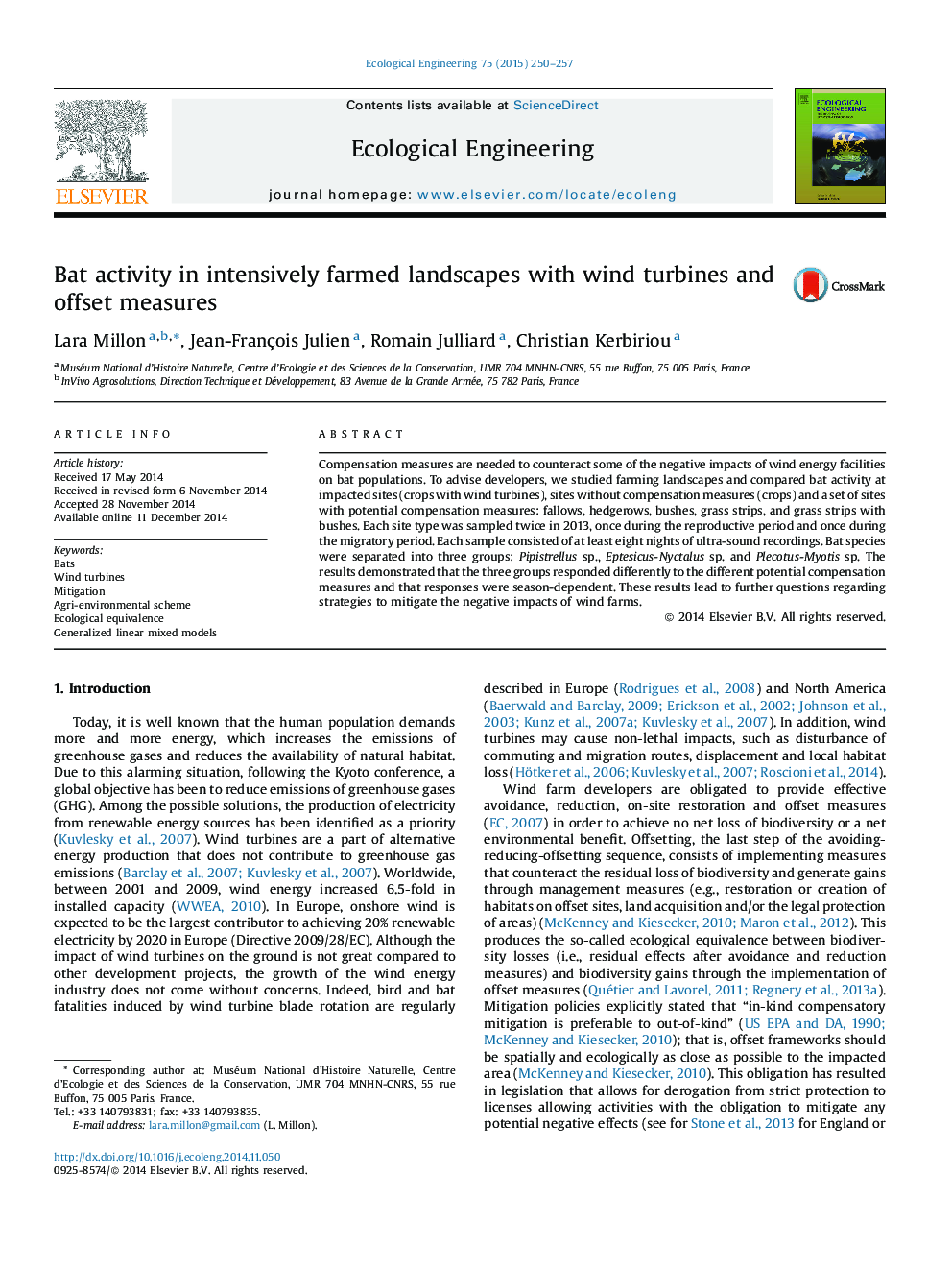| Article ID | Journal | Published Year | Pages | File Type |
|---|---|---|---|---|
| 6301710 | Ecological Engineering | 2015 | 8 Pages |
â¢Energy production from renewable resources is useful for decreasing greenhouse gas emissions; however, the negative impacts on biodiversity require measures to mitigate their effects.â¢Bat activity was compared between sites impacted by wind energy facilities, sites with possible compensation measures and control sites (i.e., those without wind turbines or compensation measures).â¢The three groups of bats showed different season-dependent responses to compensation measures.â¢These results highlight the fact that questions remain concerning how compensation measures could be implemented to be effective for different ecological niches.
Compensation measures are needed to counteract some of the negative impacts of wind energy facilities on bat populations. To advise developers, we studied farming landscapes and compared bat activity at impacted sites (crops with wind turbines), sites without compensation measures (crops) and a set of sites with potential compensation measures: fallows, hedgerows, bushes, grass strips, and grass strips with bushes. Each site type was sampled twice in 2013, once during the reproductive period and once during the migratory period. Each sample consisted of at least eight nights of ultra-sound recordings. Bat species were separated into three groups: Pipistrellus sp., Eptesicus-Nyctalus sp. and Plecotus-Myotis sp. The results demonstrated that the three groups responded differently to the different potential compensation measures and that responses were season-dependent. These results lead to further questions regarding strategies to mitigate the negative impacts of wind farms.
